As we’re all made aware, every year at this time, the holiday season is upon us.
Bells will be jingled, halls will be decked and greetings will be… seasoned?
With all the hustle and bustle, and of course the endless consumerism, it’s easy to forget the virtues that underlie our celebrations here at the end of the year. Gratitude, compassion, and hope are the three that spring most readily to mind when I think of the time between Thanksgiving and Christmas.
At Hitchcock Nature Center, it’s hard not to feel gratitude when I look out the window at all the natural beauty spread out before me. It’s possible that you’ve had a similar feeling walking these trails.
Perhaps, like me, you’ve taken a moment to pause during a morning hike, only to find a small bumble bee sleeping within the blossom of a summer wildflower. Perhaps you’ve been startled by a flight of blue herons, flying low over the hills, looking for all the world like a family of dragons. Or maybe you’ve watched the sun set from Fox Run Ridge and felt yourself a very small part of something vast and timeless.
I hope you have.
This year, as many of you know, we opened some new trails here at Hitchcock Nature Center. They connect the main part of the park with Mt. Crescent Ski Area to the south. That area, between the old boundary of the park and the ski area, is amongst the most beautiful country that Iowa has to offer. There are places in that narrow land that look little different now from how they would have appeared hundreds of years ago, and the familiar trappings of modernity are scarcely to be seen. This is an incredibly rare boast for any place in Iowa, let alone one so close to a major metropolitan area.
Last spring, before the new trails were opened or even completed, I decided to explore that landscape and familiarize myself with the beings—plant, animal, and otherwise—who call that place home. So, one day after work, with about three hours of daylight before me, I set out from the lodge. I headed down The Chute and eventually up the long incline of Westridge. I wanted to approach the valley from above and to the west, to see the ridges that I’d only explored peripherally or on a tight schedule in the past. It was a fine spring day, breezy but warm enough. I passed the then border of the park and continued out the ridge, looking for a likely place to make my descent to the pond and prairie below.
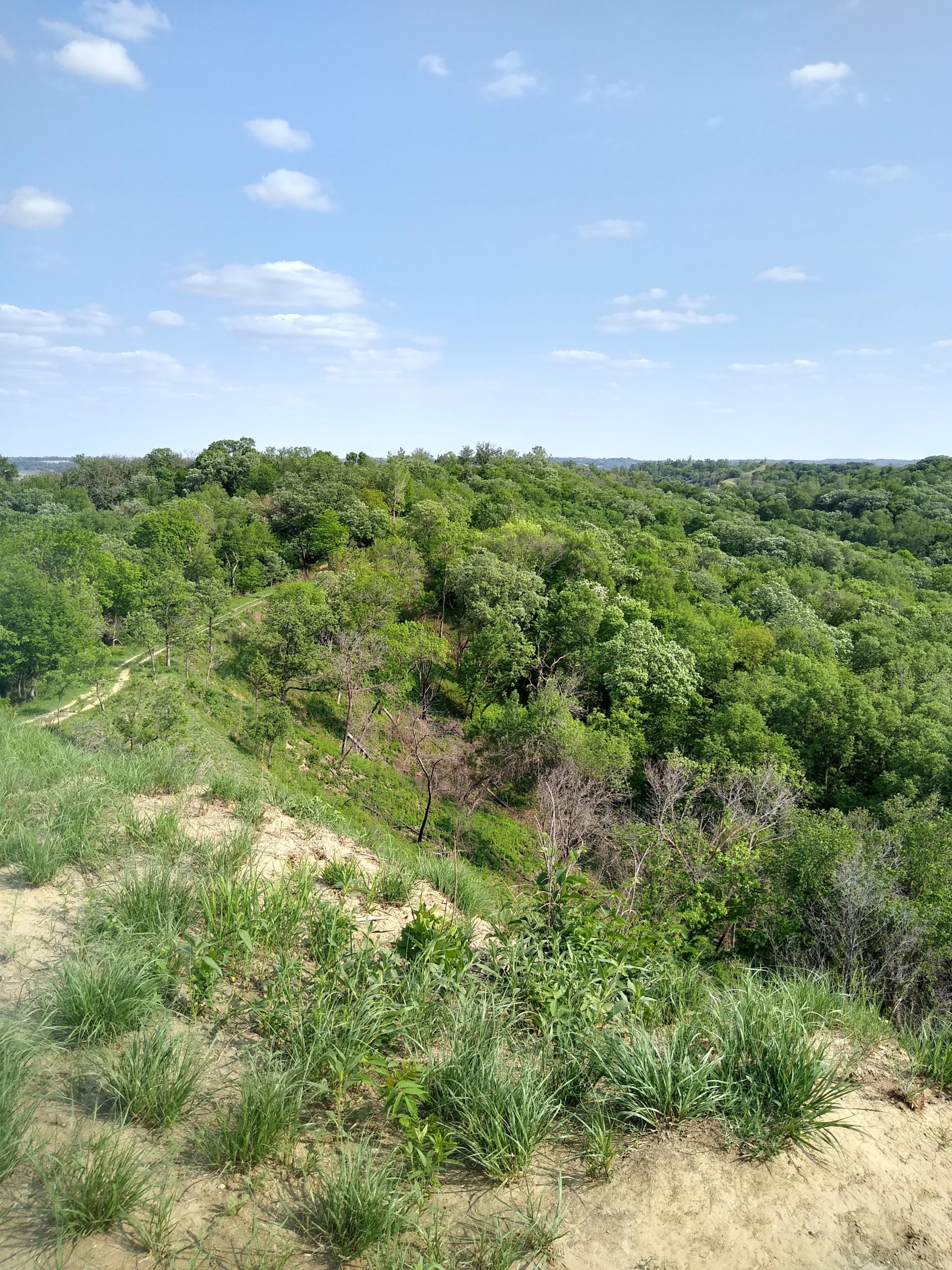
I slowly made my way down the hillside into the valley. I decided that I would hike all the way to Mt. Crescent, to take in the whole array of what had been added to the park.
While entering the valley, at the time full of spring grasses and other plants just beginning to grow to prominence, I noted how pretty and undisturbed the site appeared.
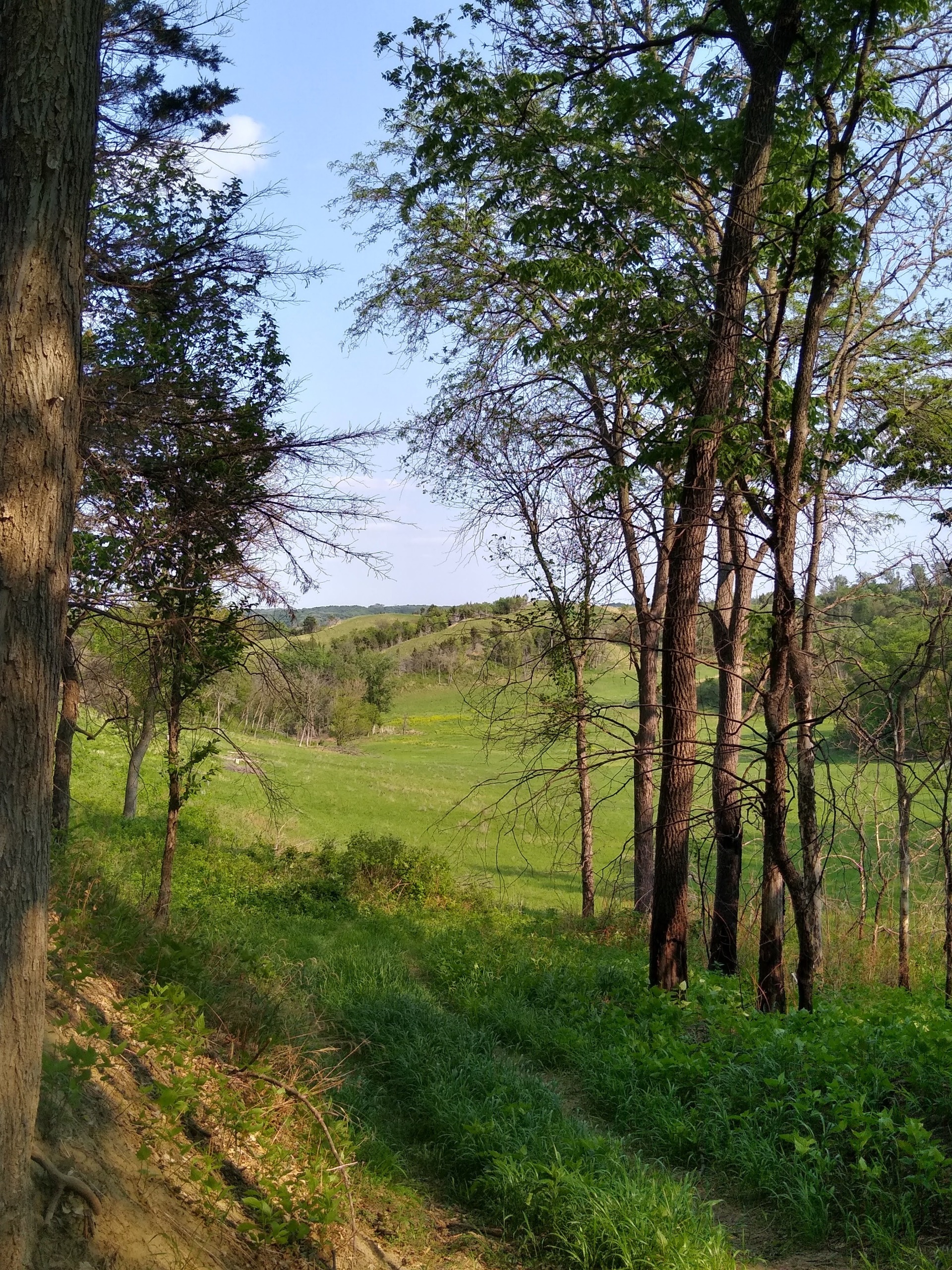
It was a little set apart from the lands that surrounded it and nestled deep enough in the hills that noise from the distant road didn’t really impact the experience. Reading through my colleague Aric Ping’s blog post from a couple of months ago, I realize just how deeply this valley has been impacted by human activity in the past. It’s a testament to this place’s character and to the tenacity of our wild biotic communities (not to mention the incredibly hard work done by our Natural Areas Management team) that it is so lush and diverse.
Ahead I spied a ridge, leading up and to the south. It seemed a likely place to ascend and hopefully arrive somewhere on the backside of Mt. Crescent. As I made my way across the valley something curious happened. Above me I heard the raspy whistling sound of Red-Tailed Hawk’s cry.
Looking up, there she was: a large female Red-Tailed silhouetted white against the sky. She was circling me and giving her call every few seconds. This alone wasn’t terribly strange; it can be a nice experience to be the subject of a hawk conversation.
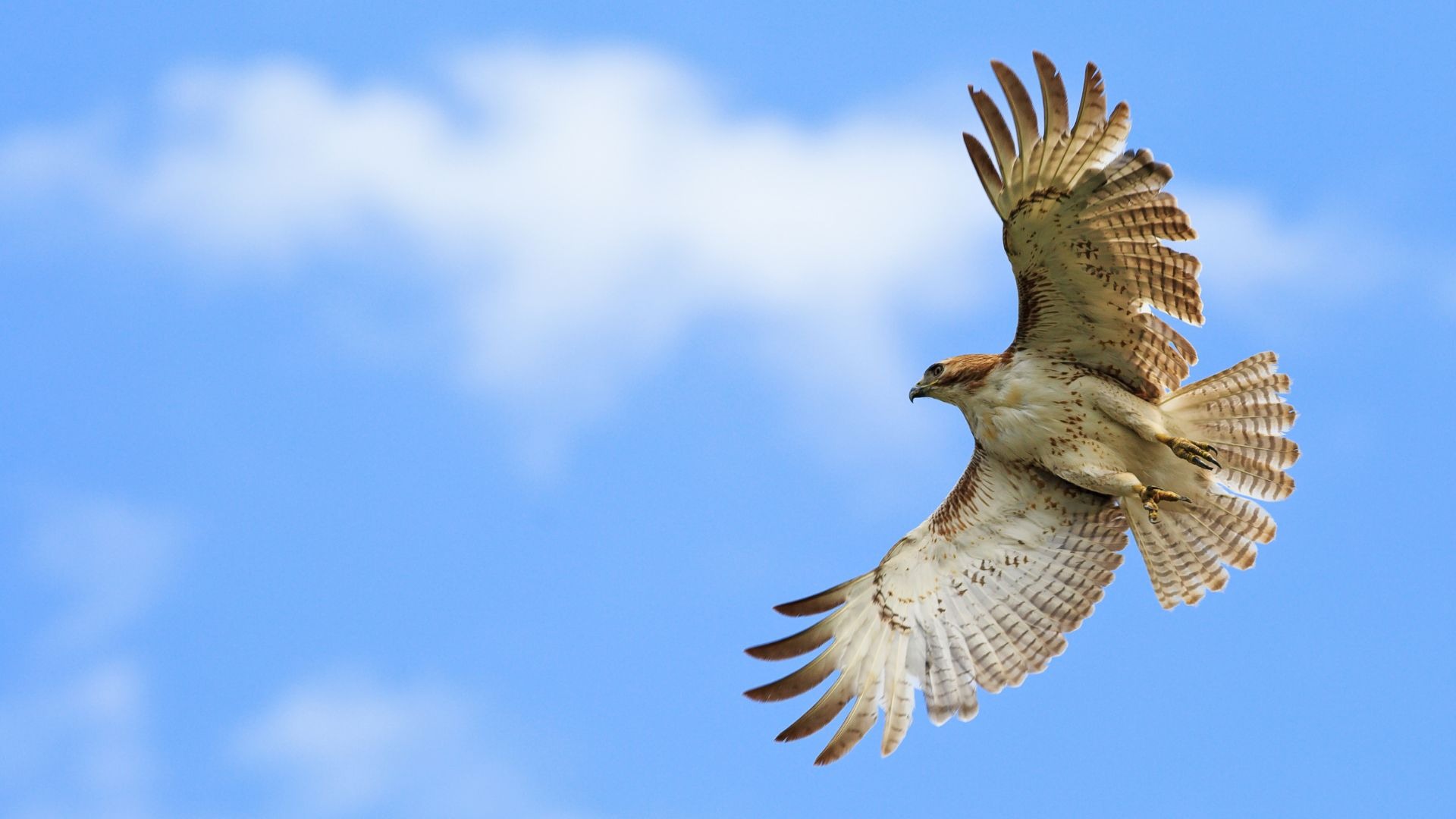
But then she did something odd. She swooped down to just about 20 feet above my head, then pulled up sharply, displaying her exposed belly and talons, let out a cry, and then flew off a short distance regaining altitude in the process. She did this over and over again. Circling, swooping, screaming.
I realized, of course, that she probably had a nest nearby and that she was trying to scare the big dumb apex predator away. I was happy to oblige. The last thing I want to do is be the cause of distress to any animal in their own home. So, I made my way as quickly as I could to a wooded area thinking that getting under cover would mollify her. As I ascended the ridge within this timbered thumb of land, I thought she’d flown away. I hadn’t heard or seen her for several minutes.
Then, I felt it.
All the hairs on the back of my neck stood up at once. I turned around just in time to see her. Twenty feet away and roughly level with my face, flying directly towards me. At about 10 feet she pulled up, turned around, and flew off. The whole thing took about a second. I’ve been in the presence of many Red-Tailed Hawks, but before that day I’d never been frightened by one.
A short time later, I emerged from the woods, roughly where I’d hoped to be, and made my way to Mt. Crescent. In the distance I saw her, now with her mate, circling their territory and calling to each other: fierce lords of a realm to which I could never be privy.
I’ve reflected on this experience many times this year. As the season has progressed, and as the new trails have filled up with people, I find myself filled with a sort of sadness for what has been lost. On that day, I was the aberration. A lone predator walking through the land of another predator who would tolerate no challenge to her preeminence. But now, we humans are the norm. We’re in that valley every day. On nice days we’re there in droves.
No longer can that place be called the Valley of the Hawk.
Once, all this land was covered in prairies, forests, wetlands, and clear, running streams. Once, every hollow and hillside, every tree and blade of grass, every raincloud and pebbled riverbank was full to bursting with these stories and interactions between beings; complex relationships continually unfolding over vast stretches of time.
We humans have been part of this community for a very long time. One strand among many, humans have helped shape this land as surely as Bur Oaks or Bison. But where does our relationship with the community of life stand today?
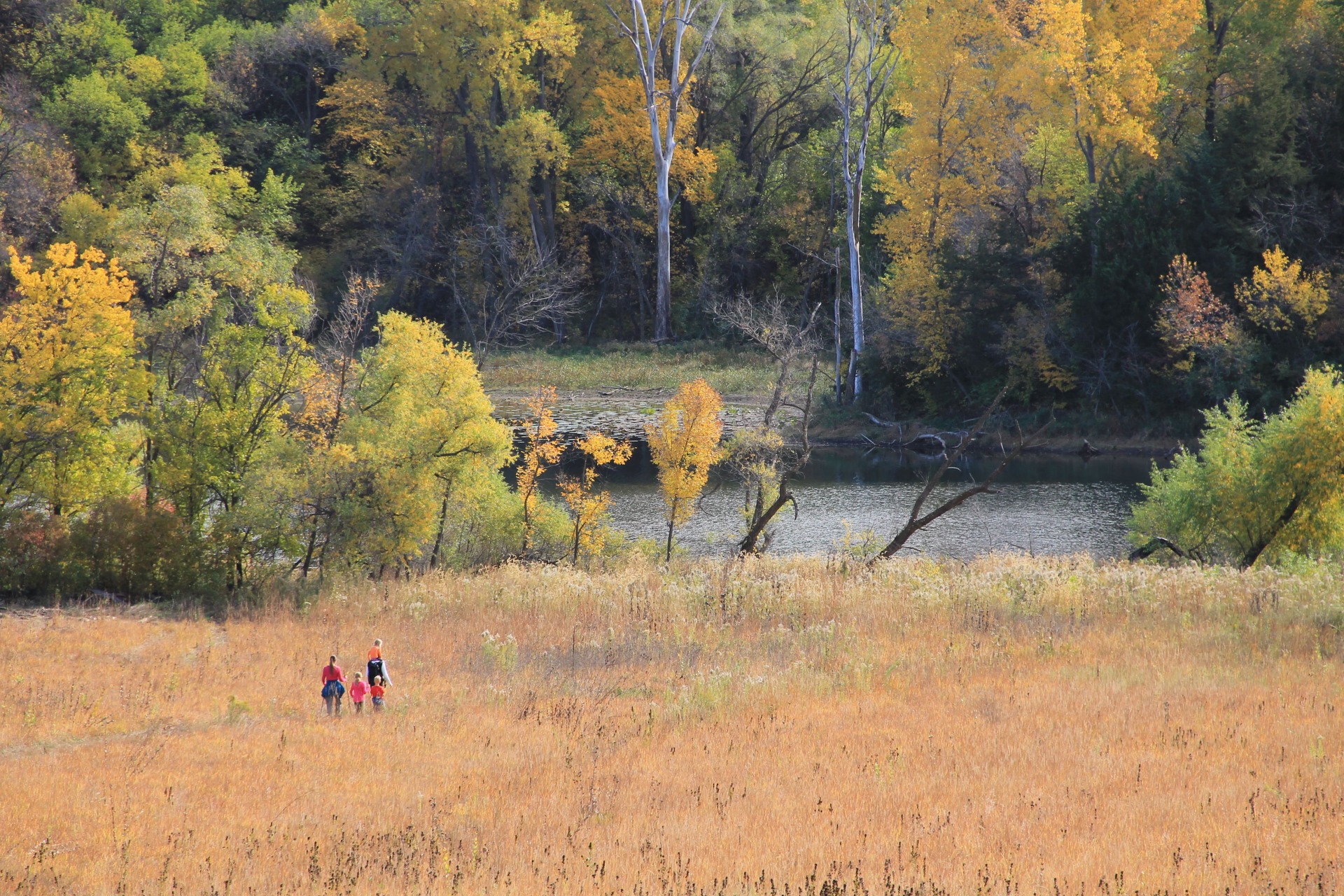
To paraphrase one of our culture’s foundational texts, what account can we give of our stewardship?
For my part, I feel honored to walk quietly in these places and I do my best to pay attention to the great song unfolding around me. To know that six hundred years ago a vast sea of prairie stretched out from this point in all directions. To recognize that fifty years ago development threatened to change this place forever. And to remember that once, for a brief moment, a hawk reigned as queen in the valley.
I just hope that we can keep it wild. I hope that ten years from now, when we walk into that valley, our line of sight is still unbothered by the presence of human development.
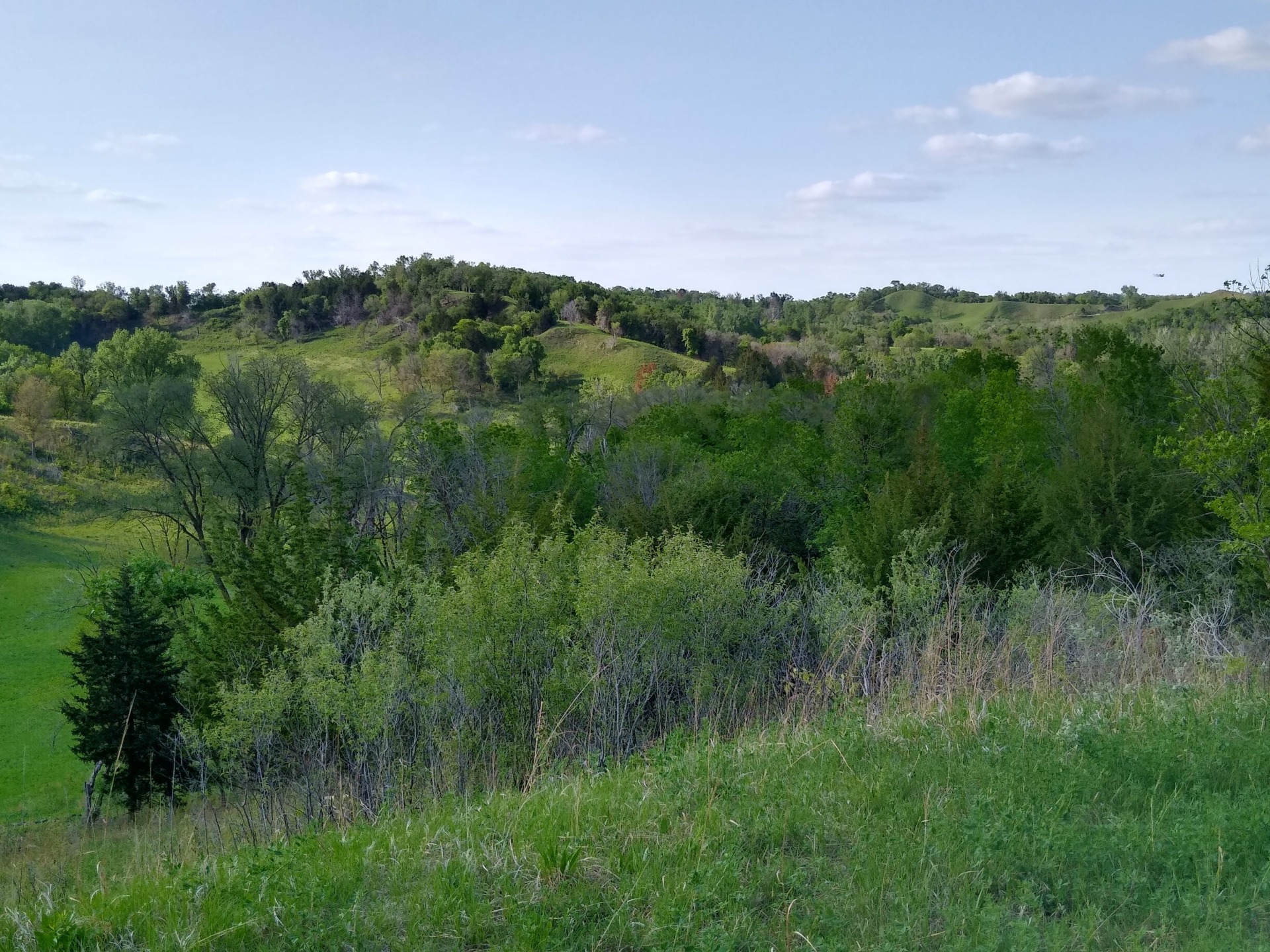
This season as we gather with our families, as we share food and drink with friends and relatives, as our thoughts and actions rightly and necessarily turn to the many, many people in the world less fortunate than we are, I hope that you’ll join me in saving some of your compassion and some of your gratitude for the rest of the living world.
For it is from compassion and gratitude that hope is born.
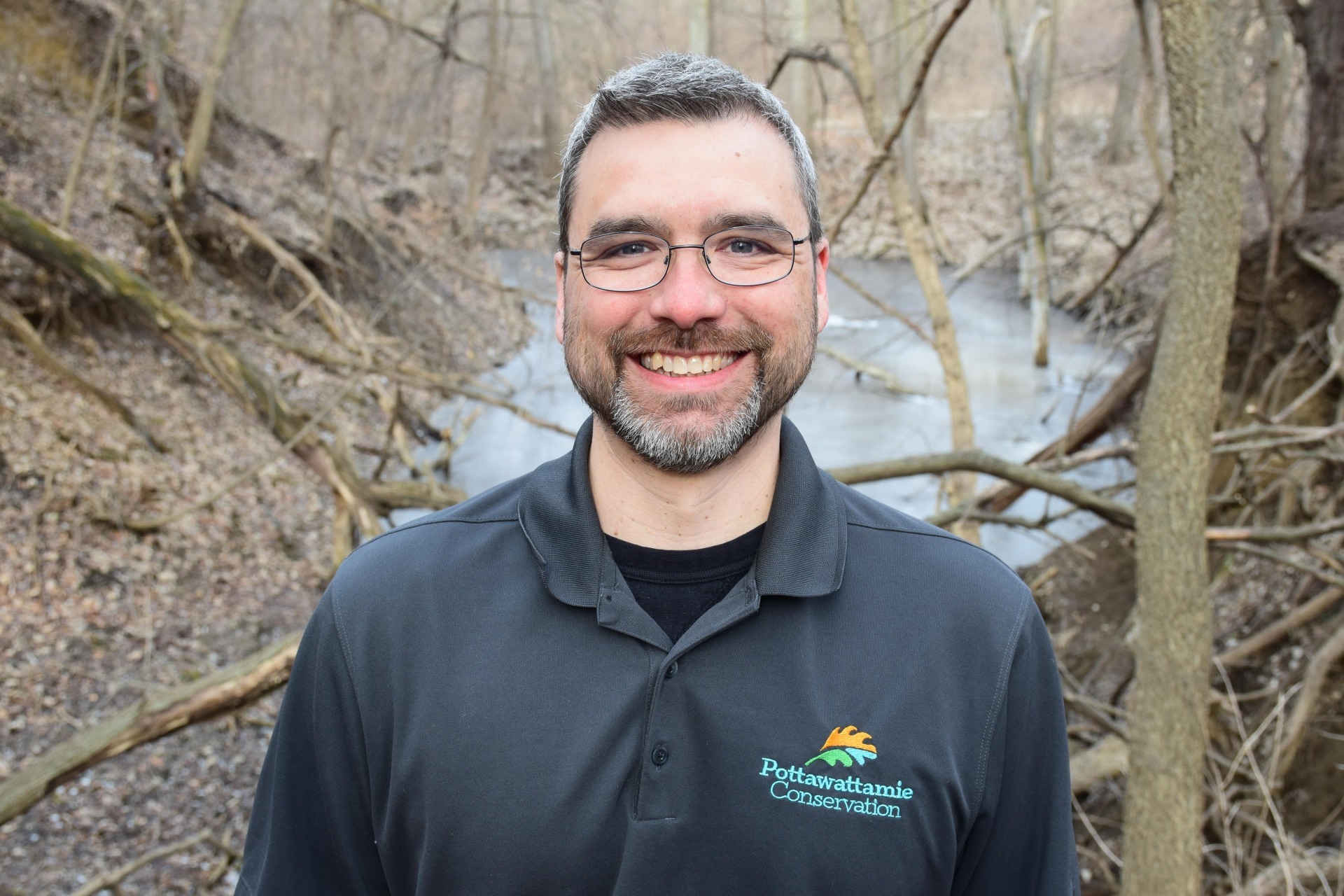
Dustin, an Omaha native, is a lifelong student of the natural world. He has been a practitioner of Earth-based skills for over 25 years. He has also formally studied geology as well as the traditional uses of native plants as foods and medicine. Dustin spends as much time as he can wandering the loess hills getting to know our local native wildlife.
Together, he and his wife Clarissa enjoy hiking, traveling, gardening, and birding.